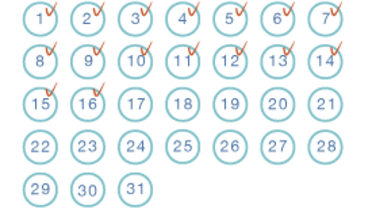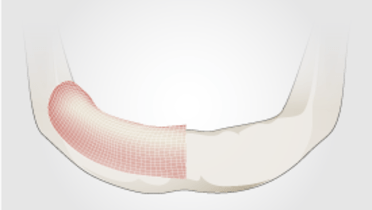-
0
Patient Assessment
- 0.1 Patient demand
- 0.2 Overarching considerations
- 0.3 Local history
- 0.4 Anatomical location
- 0.5 General patient history
-
0.6
Risk assessment & special high risk categories
- 5.1 Risk assessment & special high risk categories
- 5.2 age
- 5.3 Compliance
- 5.4 Smoking
- 5.5 Drug abuse
- 5.6 Recreational drugs and alcohol abuse
- 5.7 Parafunctions
- 5.8 Diabetes
- 5.9 Osteoporosis
- 5.10 Coagulation disorders and anticoagulant therapy
- 5.11 Steroids
- 5.12 Bisphosphonates
- 5.13 BRONJ / ARONJ
- 5.14 Radiotherapy
- 5.15 Risk factors
-
1
Diagnostics
-
1.1
Clinical Assessment
- 0.1 Lip line
- 0.2 Mouth opening
- 0.3 Vertical dimension
- 0.4 Maxillo-mandibular relationship
- 0.5 TMD
- 0.6 Existing prosthesis
- 0.7 Muco-gingival junction
- 0.8 Hyposalivation and Xerostomia
- 1.2 Clinical findings
-
1.3
Clinical diagnostic assessments
- 2.1 Microbiology
- 2.2 Salivary output
-
1.4
Diagnostic imaging
- 3.1 Imaging overview
- 3.2 Intraoral radiographs
- 3.3 Panoramic
- 3.4 CBCT
- 3.5 CT
- 1.5 Diagnostic prosthodontic guides
-
1.1
Clinical Assessment
-
2
Treatment Options
- 2.1 Mucosally-supported
-
2.2
Implant-retained/supported, general
- 1.1 Prosthodontic options overview
- 1.2 Number of implants maxilla and mandible
- 1.3 Time to function
- 1.4 Submerged or non-submerged
- 1.5 Soft tissue management
- 1.6 Hard tissue management, mandible
- 1.7 Hard tissue management, maxilla
- 1.8 Need for grafting
- 1.9 Healed vs fresh extraction socket
- 1.10 Digital treatment planning protocols
- 2.3 Implant prosthetics - removable
-
2.4
Implant prosthetics - fixed
- 2.5 Comprehensive treatment concepts
-
3
Treatment Procedures
-
3.1
Surgical
-
3.2
Removable prosthetics
-
3.3
Fixed prosthetics
-
3.1
Surgical
- 4 Aftercare
Professional oral hygiene
Key points
- The regular recall control appointment comprises professional cleaning of tongue dorsum, prosthetic components and any supragingival parts of the implant
- The routine hygiene appointment can and should be used for detection and management of any complications (e.g. inflammation, prosthetic malfunction etc.), and evaluation of oral tissue condition
- To avoid scratching the implant surfaces, for cleaning use for example plastic or titanium scalers
Professional oral hygiene recall
The regular recall control appointment, at least every 6 months, should comprise a hygiene check by the dental/oral hygienist or other auxiliary, and include professional cleaning of the restoration, prosthetic components, sulcus and any supragingival parts of the implant.
Check patient compliance and oral hygiene. Depending on motivation and hygiene situation the patient should be reinstructed and remotivated for optimal hygiene measures. If needed, consider adaptation and higher frequency of recall visits and professional oral hygiene.
In addition to the professional hygiene activities, the routine hygiene appointment can and should be used for detection and management of any complications.
Professional cleaning
Remove plaque, staining and calculus with plastic or titanium instruments/scalers suitable for use on implants. Do NOT use regular steel instruments on implants, as use of such instruments will scratch the implant surface and subsequently increase plaque retention and formation. Polish with rubber cups and adequate polishing paste suitable for implant (titanium) surfaces. For interdental areas and mucosal parts of restorations consider use of interdental brushes and fluffy, lintfree Superfloss-type floss.
Important: in case of patients with endocarditis history, administer adequate antibiotic prevention (such as Amoxicillin, or Clindamycin) one hour before treatment (Dose depends on patient weight and kidney function)
Prosthetic check
Check condition of prosthetic restoration and components, e.g. chipping of ceramic parts, loosening of abutments and retention screws, function of retention elements etc. In case of such incidents perform adequate intervention or present patient to prosthetic clinician for adequate intervention (occlusion- and function check, screw-tightening, re-cementation, repair of restoration, consideration of protection guard etc.)
Soft tissue check
As a good routine, check all oral soft tissues for any pathology signs.
Check peri-implant mucosa for signs of inflammation or infection.
In case of inflammation signs, after professional cleaning rinse sulcus with suitable antimicrobial rinse (such as Chlorhexidine, 2% hydrogen peroxide etc.). Instruction of patient for home rinse with suitable antimicrobial rinse (Chlorhexidine), 3 times daily, recall and re-evaluation after 2 weeks. Consider increasing frequency of regular recall and hygiene re-instruction.
In case of signs of heavy inflammation/ infection like swelling, exsudation, pain, bleeding, present to clinician for adequate diagnostics, X-ray, and treatment decision (e.g. antimicrobial irrigation, antimicrobial medication, surgical intervention…)
Effectiveness and efficiency of Inflammation treatment with Antimicrobial Photodynamic Therapy is controversial.
After appointment make sure to schedule next recall visit!


